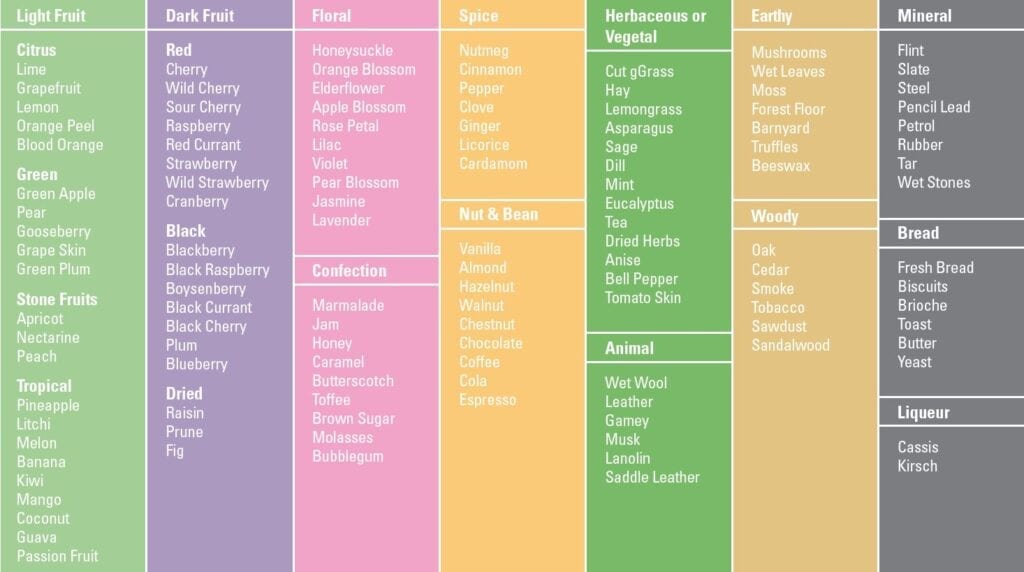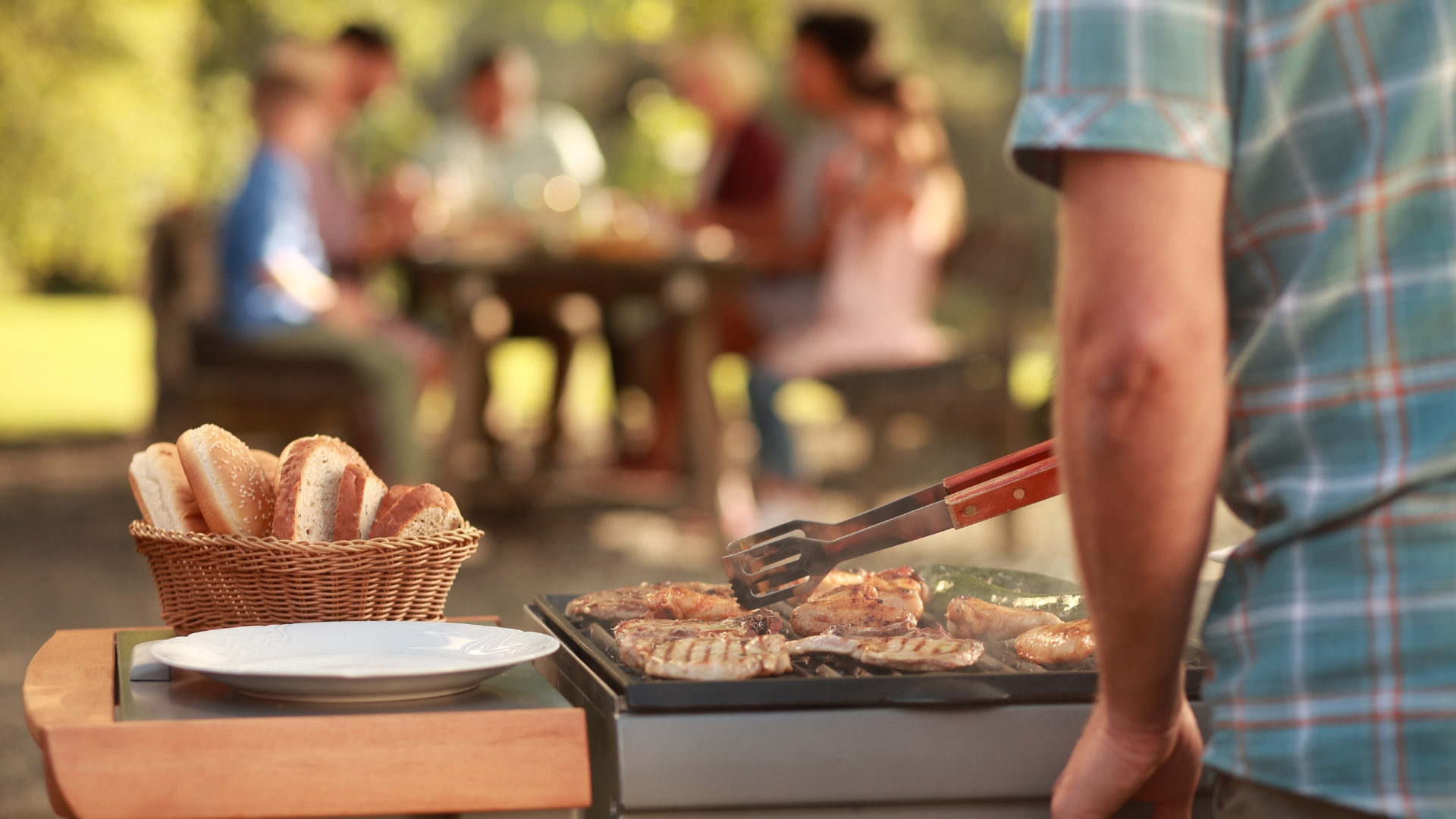Tasting wine is as simple as paying attention to the sight, smell, and taste of what’s in your glass…and as complicated as a lifetime of learning, study, and tasting thousands of wines. The guide below adheres to the simpler approach, using the senses and basic information about wine to help you focus your attention and, ultimately, appreciate your wine more. Then you can get cracking on those thousands of wines.
How to Taste Wine
Hundreds to thousands of flavor compounds distinguish one wine from the next and make tasting each wine its own experience. But relax: there is no right or wrong way to interpret your impressions. Categorize them more easily according to the three steppingstones that every wine tasting involves: appearance, aroma, and taste.
Appearance
 Tilt the glass 45° in front of a white background and examine the color.
Tilt the glass 45° in front of a white background and examine the color.- Swirl the glass and note the “legs” or “tears” on the side of the glass. This may indicate a higher alcohol level.
- Now, against the white background, examine the wine’s color.
The wine’s color gives a cue to the wine’s style and age. For whites, green or straw tints can suggest a lighter-bodied, youthful, fresh wine like Sauvignon Blanc. A gold or deep yellow in whites can indicate a fuller-bodied, oak-aged wine like some Chardonnays or Sauternes. Deep purple-red can indicate a younger, fuller, robust red like a Cabernet Sauvignon, Tempranillo, or Malbec. A lighter ruby red can signify a younger Chianti or Pinot Noir. Brown can indicate a wine is oxidized; good for a Sherry or Tawny Port but a flaw for most others.
Aroma
Tasting wine means smelling wine. The nose can detect over 1,000 aromas; the tongue detects only five flavors (so, next time you have a head-cold, don’t waste your good wine).
- If possible, avoid distracting scents like perfume or cigarettes before and during tasting.
- Swirl the wine in the glass. This aerates it and optimizes the release of aromas.
- Isolate the different aromas and note their intensity.
Isolating and identifying aromas is where people can get intimidated. But did you know that anyone can “train” their nose? It is all about recalling scents you know, familiarizing yourself with different key aromas in wines, and paying attention. One fun and incredibly effective way to train the nose is conducting blind tastings with opaque wine glasses filled with single aromas that can be detected in a wine (a vanilla stick, a piece of cedar, a slice of lemon). Sniff; guess; check your guess against the answer; and continue, grouping red and white aromas in separate sessions. In just a day or two, these scents will practically jump out at you from the glass of wine.
Or, here’s a fun twist: How to Train Your Palate, Starting with Jelly Beans
An aroma chart is also extremely helpful in narrowing down scents. For example, start out with “fruity,” move towards red or black fruits, and then towards distinct fruits within those groupings. Many wine varieties are easily identified by their signature aromas. Tar and roses are classic aromas for Nebbiolo; for Sauvignon Blanc, it’s gooseberries.

Taste
A wine can be assessed for quality regardless of your personal opinion. A “good quality” wine does not mean the evaluator necessarily enjoys it; it means the wine has hit specific criteria and rated well.
- Cleanse your mouth with a cracker or bread before taking your first sip.
- Swish the wine around your palate and evaluate its flavors, texture, and body.
- Determine whether the flavors confirm the aromas.
- Form conclusions about the wine’s characteristics and grape variety.
- Note how long the wine’s flavors last in the mouth and how they evolve after you’ve swallowed.
Need some help finding the words to describe the taste? The following categories can be singled out and described regardless of personal preference; and if you can determine the quality of a wine beyond your opinion, then congratulations: you’re on your way to becoming a sommelier!
- Body: Light, medium, full-bodied
- Sweetness: Dry, off-dry, sweet
- Acidity: Crisp, fresh, tart
- Tannins: Firm, silky, round, dry, dusty
Part of tasting is the “finish,” or the wine’s aftertaste. A basic metric of quality is how long a wine’s taste remains on the palate. Great wines have flavors that linger in the mouth for several minutes…and can remain in the taster’s mind for a lifetime.




